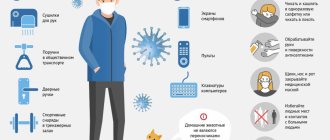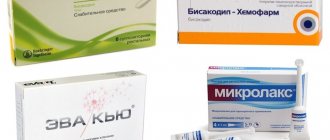A person is able to maintain body temperature in a relatively constant range from 36 to 37.1 ° C, despite the fact that he experiences many environmental factors and the influence of thousands of processes directly inside the body. Thanks to daily biorhythms, the temperature in the morning is lower, and in the evening, on the contrary, it rises. Changes in weather conditions, indoor air, physical activity, illness - all this can change body temperature both above and below the mentioned indicators. This process, reaching critical values, can lead to a life-threatening condition, so it is necessary to know at what temperature a person dies.
Pathological temperatures
At low temperatures (hypothermia), people die due to extreme hypothermia of the body and all organs. With increased (hyperthermia), they die not from “overheating,” but from the disease or factors that caused its rise.
Comparison of pathological temperatures.
| Hyperthermia | Hypothermia |
| Subfebrile – 37.2 – 37.9 °C. | Initial - 35 - 32 °C. |
| Moderately elevated – 38.0-38.9 °C. | Average - 31.9 - 27 °C. |
| High – 39-39.9 °C. | Severe – below 26.9 °C. |
| Excessively high – 40 °C and above, which includes, in particular, hyperpyretic (above 41 °C), which is the most dangerous. | Extremely severe – below 22°C. |
Temperature standards
Normal body temperature indicators have minor physiological daily fluctuations. This is due to the fact that in the process of life there are certain biorhythms. Intense physical activity, psycho-emotional stress, taking certain medications, and much more can temporarily affect the temperature.
When critical levels are reached, a person’s life is threatened, so it is necessary to monitor it and take timely measures to stabilize it.
Table: Indicators of normal body temperature depending on the measurement area and time of day:
| Measuring area | Measurement Features | Average value, (оС) | Morning, (оС) 500-700 | Evening, (оС) 1900-2100 |
| Axillary | It is traditional and most common. Measurements are taken with a mercury and electronic thermometer in the armpit. The skin in this area should be clean and dry. | 36,6 | 35,6 – 36,2 | 36,9 – 37,2 |
| Inguinal | Thermometry is performed vaginally or anally. Used in pregnant women and women planning pregnancy, children, the elderly, and in cases of suspected cancer. | 37,9 | 37,7 | 38,3 |
| Oral cavity | It is the most reliable way to determine body temperature. The measurement is carried out in the sublingual area; before this, the consumption of hot and cold foods should be avoided. | 37,3 | 37,1 | 37,7 |
For measurements I use mercury, electronic and infrared thermometers. There are special forms for infants, in the form of a pacifier, and non-contact ones, which determine the indicator on the skin. In the latter case, the measurement is carried out on the skin of the forehead; it is equal to the value in the armpit.
At what body temperature does a person die?
When it drops to 25°C, the condition is regarded as life-threatening, certain near-death sensations occur, and at temperatures below 20°C, death occurs. Upon reaching 42.5°C, the brain gradually dies irreversibly, and above 45°C, organ cells are destroyed.
Hyperthermia - overheating of the body
This condition occurs during heat or sunstroke, when there is a sudden and intense rise in body temperature, from which a person can die. This form of hyperthermia can reach temperatures of about 42°C in a matter of minutes. This condition occurs either from too much heat, which presses on a person from all sides, or from the body’s inability to quickly adapt to high environmental temperatures.
Heatstroke
It can happen in a fire, while working in “hot” shops and other industries, etc. A patient exposed to heat stroke dies from a lack of cardiac function, respiratory arrest and intoxication (due to the accumulation of ammonia released due to the destruction of blood cells and microcirculation disorders) in 30% of cases. The body temperature during such a death depends on the conditions where the deceased was found.
Sunstroke
The direct action of sunlight and its radiation can dramatically change body temperature. Due to the infrared portion of the total solar radiation, a person warms up both the upper layers of the skin and the deeper ones, right down to the organs and tissues. Due to this radiation heat, the entire body, including the brain, overheats. This is especially dangerous because... It houses an important thermoregulator of body temperature. During sunstroke, this center is switched off from the body's work, leading to its gradual death.
Important! If you suspect sunstroke or heatstroke, call an ambulance immediately!
Diseases
“Internal” hyperthermia, or, as it is also called, toxic, is formed in the body with a rapid increase in heat production inside the human body, when sweating and other regulatory mechanisms cannot cope with its excess. There are quite a lot of such reasons:
- hemorrhages, stroke, traumatic brain injury, when the thermoregulatory center of the brain is affected;
- mental disorders: psychotrauma, hysterical reaction, mental illness;
- difficulty in heat transfer during training and other physical activities in thermal clothing;
- diseases of the thyroid gland and adrenal glands;
- infectious diseases;
- decreased sweating and vascular spasm in the skin;
- tumors;
- inflammatory diseases of the abdominal and retroperitoneal cavities, respiratory tract, ENT organs;
- abscesses and phlegmons.
Overheating of the body entails disruption of blood flow, as a result of which the latter is reduced. Heat ceases to be adequately transferred from organs to the surface of the skin. Under the influence of high temperatures and stress, the body forms and releases many enzymes and hormones into the blood, which, due to reduced blood flow, have a toxic effect on the heart muscle. When the heart overheats, it is not able to satisfy the given needs, and circulatory failure develops. At 42 - 43°C, breathing stops and the victim dies.
Hypothermia - hypothermia
When the body is hypothermic, it is important to know at what air temperatures a person dies and what processes occur in the body during hypothermia.
Factors leading to death from low body temperature
The following external causes that lead to hypothermia are distinguished:
- high air humidity leads to reduced thermal insulation;
- strong wind quickly cools the body;
- damp, wet, cold clothes reduce thermal insulation properties;
- getting into cold water means a sudden loss of heat;
- alcohol intoxication, fasting, injury or extreme conditions can reduce the body's defenses, making it more sensitive to temperature changes;
- dehydration;
- loss of consciousness at low temperatures.
“Internal” hypothermia is a rarer phenomenon, but, nevertheless, such ailments occur only in conditions of low ambient temperature. It occurs only in conjunction with “external” hypothermia. Most often this condition occurs when:
- extensive muscle paralysis;
- muscle dystrophy;
- adrenal insufficiency;
- extreme exhaustion of the body.
The dying process
During hypothermia, when the body temperature drops to 36°C, the muscles of the neck and shoulder girdle first tense up. At the same time, the thermoregulation center narrows the capillaries in the skin. Due to the reduced blood flow, it feels like your arms and legs are cramping. After about an hour, the body temperature drops to 35°C and chills appear, because The body tries to release heat during muscle contractions and movements.
After an hour, enzymes in the brain begin to reduce their productivity by up to 5% for each reduced degree from normal. When reaching 34°C, brain neurons show the first signs of degradation - a person loses memory and is forgotten, because... the body is no longer able to warm itself. Heat loss increases, and at 32°C confusion, apathy, and drowsiness occur.
At temperatures below 28°C, arrhythmia occurs, a person lacks oxygen, resulting in hallucinations. Below 25°C, the rhythm of the heart and breathing is disrupted, consciousness becomes confused, and coordination is impaired. Death occurs when body temperature drops to 20°C. In this case, consciousness is no longer present, pulmonary edema forms, the heart stops and the person dies.
Dangerous indicators
What thermometer readings are considered dangerous? What is the lethal body temperature for humans?
If we are talking about hypothermia, then at figures of about 25 degrees there is already a serious threat to life. Doctors assess this condition as dying. A person can only be saved with the help of emergency resuscitation measures. If the body temperature drops below 20 degrees, then death occurs.
As for high temperature, when the thermometer readings are above +42.5 degrees, the patient’s metabolism in the neurons of the brain is disrupted. Massive death of nerve cells occurs. Even if doctors are able to save the patient’s life at this stage, full restoration of health is unlikely. Some body functions will be lost forever. If the body temperature exceeds +45 degrees, then protein destruction occurs in the human body. This almost inevitably leads to death.
What does a person who died from overheating and cooling look like?
When a person dies from exposure to cold or heat, they develop signs that can be used to determine what caused the death.
For sunstroke and heatstroke, there are no specific symptoms. If you die in a fire or explosion, you may find the following picture:
- thermal rigor of muscles;
- the person is in a peculiar boxer’s pose - with bent arms and legs;
- the face is evenly smoked;
- the skin is covered with blisters containing contents;
- cracks on the skin with smooth edges.
Signs of death from hypothermia:
- pale skin;
- pinkish cadaveric spots;
- frostbite zones on the body;
- frost on the face;
- clothes frozen to the body.
Danger of hyperthermia
With hyperthermia, a person's blood circulation sharply worsens. As a result, the organs become overfilled with blood, which leads to disruption of their function. The body, under conditions of overheating, produces excessive amounts of enzymes and hormones that have a toxic effect on the myocardium. As a result, the patient dies from cardiac arrest.
The lethal body temperature for humans is from +42 to +43 degrees. However, the patient can die even with lower thermometer readings. Indeed, with hyperthermia, several dangerous factors act on the body at once. High temperature leads to intoxication with metabolic products, disturbances in water-salt balance and dysfunction of many organs. Such a negative complex effect becomes the cause of death.
First aid for overheating and cooling
When providing first aid as a result of “overheating” when heat or sunstroke occurs, the person is transferred to a ventilated and cool place where he will be protected from sunlight. The victim's clothes are removed, washed with cold water and a cold compress is applied to the forehead. Be sure to try to give them cool water or tea.
In case of hypothermia, it is necessary to warm the victim as quickly as possible. To do this, they bring a person into a warm room or car, remove his wet or cold clothes, begin to rub him with a warm soft cloth (gloves or hats are used as auxiliary material), and wrap him in a blanket. Gloves are put on the victim's hands and woolen socks on his feet. They also try to give them hot sweet tea.
Important! In both cases, it is necessary to call an ambulance, since the patient’s condition may be more unstable than it seems at first glance, and can lead to the death of the person.
Causes of hypothermia
The causes of low human temperature are the following pathological processes:
- hypothermia;
- anemia;
- immunodeficiency states;
- overdose of sleeping pills or antidepressants;
- anorexia;
- endocrine pathology.
Of all the above, only a decrease in temperature as a result of hypothermia can become fatal for a person.
In most reported cases of hypothermia, patients were forced to remain in the cold for several hours or in cold water, as on the Titanic. Fishermen who find themselves in an ice hole often find themselves in similar circumstances.
At what temperature do viruses die?
Viruses, due to their specific structure, have high survival skills at low temperatures (they live for years, especially in liquid environments), but they die quickly at high temperatures. For all microorganisms that cause diseases in humans, the optimal temperature for reproduction is the range from 20 to 40°C. Therefore, they die when they leave this “favorable” range.
Influenza virus
This is one of the most frequent “guests” in the human body in dank and cold weather. The virus is unstable and dies even at room temperature if the air humidity is below 55%. Moreover, if the air humidity is about 100%, the virus can circulate in the air for a very long time. It feels calm both at -5°C and -15°C, maintaining its activity, but it dies in 5 minutes at temperatures above 50°C.
In the human body, the virus increases body heating to 38-41°C. The body temperature at which a person dies from the flu is more than 42°C. This condition appears in rare cases of severe influenza, namely, as a result of a very powerful immune response.
Influenza can be avoided by knowing how long and at what temperatures its pathogen dies:
- in dry room air at a temperature of 20°C for four hours;
- during the period of washing things in a washing machine at a temperature of 50-60°C;
- when boiling for one minute;
- when dried at a temperature of 30°C - per day.
Rotavirus
This is an infectious pathogen that survives both in conditions of high temperatures (up to 50°C) and low temperatures - down to -20°C, which makes it widespread. However, it cannot withstand freezing and boiling. Raises a person's temperature to 39 degrees.
Hepatitis A virus
This virus is widely resistant to the external environment, including temperature differences: it lives at 20°C in water for about a year, and in a dry environment for up to a week. It is killed almost instantly by boiling, but heating to 60°C kills it in just half a day and then with constant action. Causing disease, the virus raises the temperature to 38-39°C. A person usually does not die from the hepatitis A virus, but they must undergo a long course of treatment in a hospital.
HIV
The human immunodeficiency virus is extremely unstable and practically does not live in the external environment. Outside the body, it lives for several minutes when open, but when bound (in a drop of blood or sperm) it does not die within 48 hours. Its optimal temperature of existence is 33-39°C. Due to the increase in the number of AIDS diseases, many people are interested in the question at what temperature does HIV die. Such a dangerous virus dies at 60°C for 40 minutes.
Koch stick
Mycobacterium tuberculosis, or Koch's bacillus, multiplies in conditions from 37 to 42°C, living in human tissue for decades. This is a very tenacious microorganism - it can exist both in conditions of high humidity (in damp, cold basements for about 7 years) and in places where there is a lot of sunlight (at +10°C for about 2 months). The mycobacterium dies when boiled or heated to +85°C.
Knowing at what temperatures the HIV virus, hepatitis A, influenza, mycobacteria, and so on die, you can prevent infection and their spread. And knowing at what body temperature a person dies, you can prevent processes that lead to death.
Normal indicators
The human body is able to function fully only within a small temperature range. Its normal indicators largely vary from person to person. They depend on the characteristics of the body, external conditions, and time of day. On average, indicators from +36.0 to +37.1 degrees are considered normal. If the thermometer column deviates more or less from these numbers, then this usually indicates trouble in the body.
However, there are also indicators at which irreversible and incompatible changes with life occur in the body. A person's deadly body temperature can be either below normal (hypothermia) or significantly higher (hyperthermia). In the first case, the death of the organism occurs due to general hypothermia. With hyperthermia, death is caused either by the disease itself, which causes the temperature to rise, or by exposure to external factors.
Natural reaction of the body
When a disease occurs, the human body raises its own temperature to resist foreign invaders. This can happen either within 24 hours or quickly - in just 30-60 minutes. The faster the temperature rises, the more acutely it is perceived by the patient himself. He may experience chills, headaches, muscle pain, and sometimes a real fever.
No matter how unpleasant the sensations may seem, you should not immediately grab fever-reducing medications. It is necessary to understand that the body has entered into a fight against the disease, with the greatest degree of probability it will win in the next day or two, and the only thing that is required of the patient is not to interfere in this battle, but to endure the troubles that befall him.
What is caloric
Warm
– mechanical property of the material.
The hotter an object, the more energy its particles have while moving. Atoms of substances
in a hot solid state vibrate faster than atoms of the same, but cooled substances.
Whether a substance remains in a liquid or gaseous state depends on the temperature to which it is heated
.
Today, any schoolchild knows about this, but until the 19th century, scientists believed that heat itself was a substance - a weightless fluid
called
caloric
.
Scientists believed that this fluid evaporated from the warm material, thereby cooling it. It can flow from hot objects to cold ones
.
Many predictions based on this theory are actually correct. Despite misconceptions about heat, many truly correct conclusions and scientific discoveries
. The caloric theory was finally defeated at the end of the 190th century.









